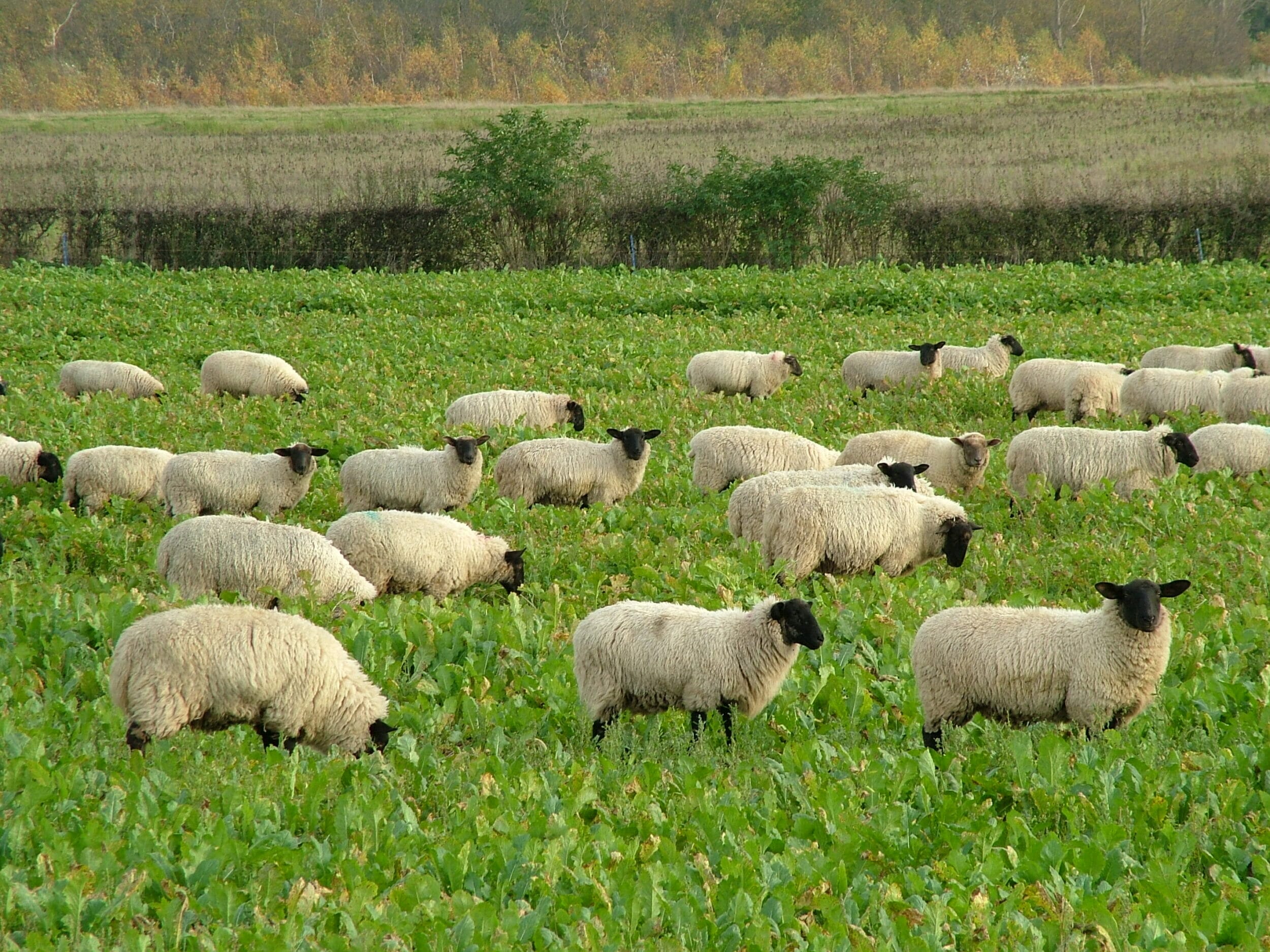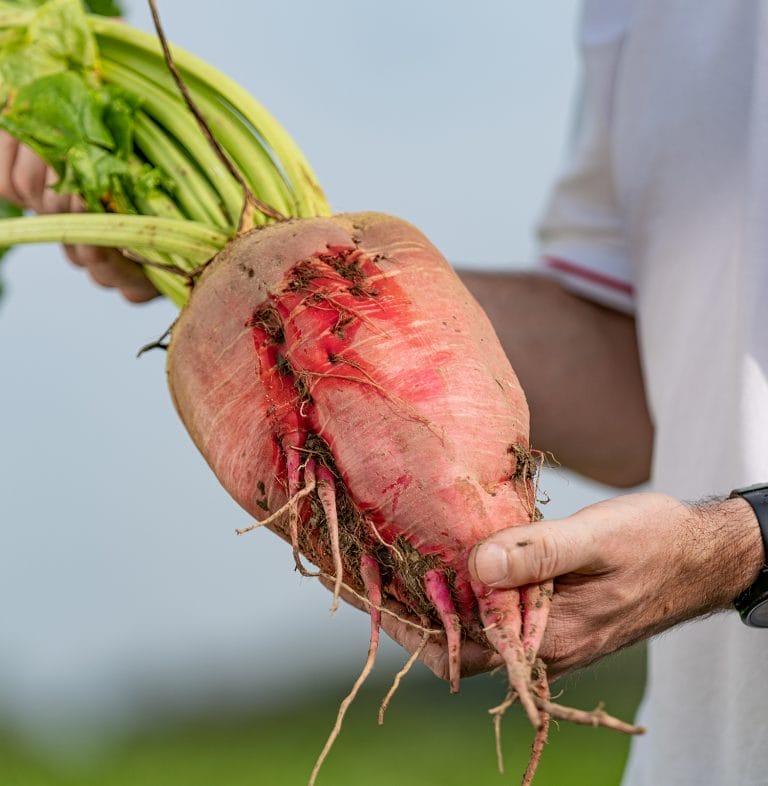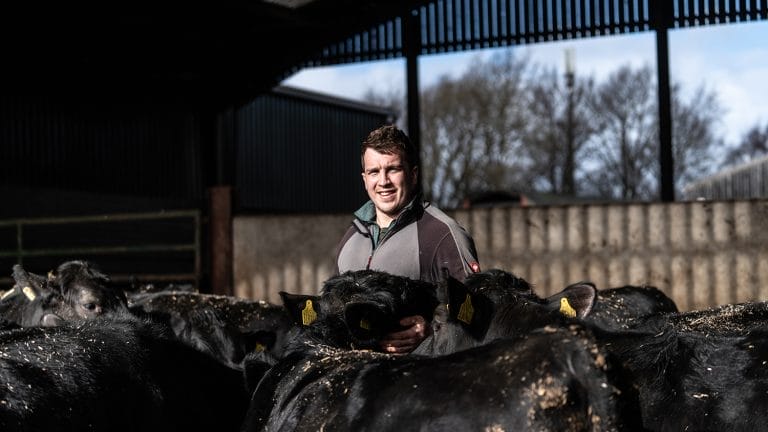What choices are there for sheep producers who want to mitigate the risk of a grass shortage and have a fresh high feed value forage to hand when finishing lambs later this year? According to Limagrain’s Martin Titley, there are plenty of options.
And not only do they offer a low-cost forage option, but they can also provide a break crop after grass leys or cereals.
“There are a number of good fodder crops that arable or mixed farms could consider this spring, instead of sowing cereals,” says Mr Titley. “A lot of arable units are facing big acreages for spring crops. Sowing a break crop on some fields might not be a bad option; maybe where there’s been a blackgrass problem or as an option to break the disease cycle.
Stubble Turnips
Stubble turnips are an ‘old favourite’ and lost popularity as rotations changed and other options became more fashionable. But they’re now back in favour. “Arable and sheep producers alike recognise that they suit practically any sheep production system – they’re incredible versatile,” says Mr Titley.
 He says that the real attraction for this crop is that it’s fast growing and for some the flexible sowing time is attractive. It can be sown in May and June, after first-cut silage, to get a bite in early August and September. “This is good on units where grazing can burn off later in the season. It acts as an ‘insurance’ crop against a dry summer and allows producers to finish lambs on a low-cost forage crop.”
He says that the real attraction for this crop is that it’s fast growing and for some the flexible sowing time is attractive. It can be sown in May and June, after first-cut silage, to get a bite in early August and September. “This is good on units where grazing can burn off later in the season. It acts as an ‘insurance’ crop against a dry summer and allows producers to finish lambs on a low-cost forage crop.”
Most stubble turnip crops are sown after cereal harvest – at the end of July or beginning of August – and are then ready for grazing between 12 and 14 weeks later.
“They’re ideal for plugging the forage gap between September and the end of December,” he says, adding that this year, being very mild, farmers have grazed them well into February. “This isn’t the norm though and can’t be taken for granted.”
For the latest Stubble Turnip Trial Results from our UK Trials, click here.
Forage Rape Hybrids
Forage rape and hybrids -which are typically a cross between rape and kale – are becoming a ‘go to’ choice for finishing lambs.
“These forage rape brassicas are particularly popular because of their flexible sowing dates,” adds Mr Titley. “They can be sown from May until late August and used as summer grazing or sown into winter barley stubble in late July.
An easy to grow crop also makes these hybrid brassicas popular. They benefit from farmyard manure or slurry pre sowing, or an application of 60kg to 90kg of nitrogen with 25kg each of potassium and phosphate per hectare.
“And they’re fast-growing so ready to graze in 12 to 14 weeks. Sown in May, they give a bite at the end of August or early September which is ideal for finishing lambs on many farms.”
But the crop can be used across winter too and will keep its leafiness in colder conditions. “Forage rape and the hybrid crops are winter hardy and are capable of carrying stock well into February and even early March. But it must be grazed before flowering as once it starts to flower, it loses its nutritional value.”
Modern rape kale hybrids offer high feed values. “Take one of the latest, Unicorn, launched in 2019. This fast-growing leafy catch crop offers energy values of 11 MJ per kilogramme of dry matter, producing 49,438 MJ per hectare, and a dry matter content of 12.4%. This is a lot of feed value from 12 to 14 weeks of growth.”
For the latest Forage Rape Trial Results from our UK Trials, click here.
A Good Mix
Both stubble turnips and forage rape hybrids provide a good break, helping to build fertility back into the soil and to control both broadleaved and grass weeds. They can be followed with a spring grass reseed or a spring cereal crop.
“A mix of the two in one cropping is popular too,” he adds. The stubble turnip ‘bulbs’ provide a high energy crop, whereas the brassica hybrids, such a forage rape, pack a protein punch. This offers a more balanced forage mix in one crop.
 “In freezing and snowy conditions, the forage rape ‘stands up’ and creates a canopy over the stubble turnips which generally keeps them fresher for longer.”
“In freezing and snowy conditions, the forage rape ‘stands up’ and creates a canopy over the stubble turnips which generally keeps them fresher for longer.”
Mr Titley says that the popularity of swedes is declining as more producers discover the benefits of stubble turnips and forage rape. “But we’re still seeing the old favourite swede variety; Invitation and our Massif traditional turnip take their well-earned place on some sheep units.
“These crops grow well in autumn so they’re ideal where cereal harvest is later; which is often why we see them grown in Scotland. They provide a high energy, high dry matter winter feed that can be grazed from the end of November through to February with relatively low production costs.”
Herbal Leys
Herbal leys are getting more popular for grazing sheep and finishing lambs. The perennial mixtures typically persist for three or four years and comprise species including chicory and plantain, as well as traditional grasses such as meadow fescue and sainfoin.
“The species are deep rooting and they continue to thrive in dry conditions – either during drought or towards the back-end of the grazing season, when grass may be struggling,” says Mr Titley.
These mixtures really come into their own on chalky, light and free-draining soils. They’re also rich in minerals, compared to other forage crops.
Sheep farmers on or close to EFA land, which is now subject to the ‘greening’ rules, cannot leave land fallow during the winter – a green cover crop must be sown and must remain in place until January 12 each year.
“A mixture of forage rye Humbolt and vetch, which can be sown as late as September, is a good option,” says Mr Titley. “It’s a reliable feed for both ewes and finishing lambs to graze, up until April, if required.”
He adds that herbal leys are becoming more predominant in arable farming areas. “Sheep and arable farmers can work together on this. There are also soil health and fertility benefits to be had by arable producers who graze livestock on a proportion of their land each year.”


































